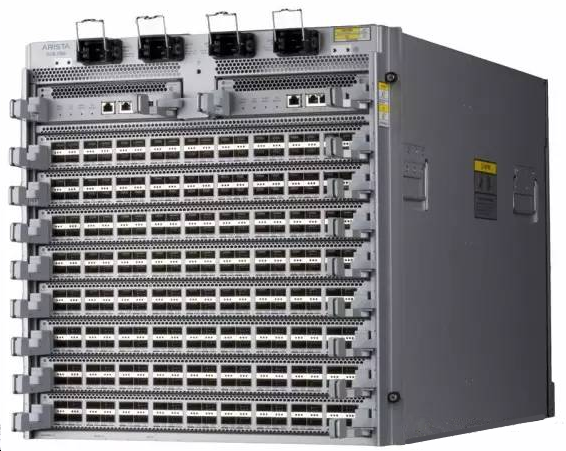- Related articles
- All Cisco DWDM-X2-31.90's information (List price, Specs, Datasheet PDF, Compatibility mat
- All Cisco DS-X2-E10G-SR's information (List price, Specs, Datasheet PDF, Compatibility mat
- Optical Transceivers for Cisco N2K-C2224TP Switch
- What is a SFP module?
- All Cisco CWDM-SFP10G-1610's information (List price, Specs, Datasheet PDF, Compatibility
- What Is GYDTA Fiber Optic Cable?
- All Cisco CWDM-GBIC-1470's information (List price, Specs, Datasheet PDF, Compatibility ma
- All Cisco SFP-10G-SR’s information (Overview, List price, Specs, Datasheet PDF, Compatibil
- Optical Transceivers for Cisco IE-2000-16PTC-G-E Switch
- Optical Transceivers for Cisco SG550XG-24T-K9-UK Switch

The core switch port is mainly fiber type, but the price of the switch fiber port is very expensive which the user needs to pay special attention to, and it is without stacked capacity so as only to be used for cascade connection.

Cascading can use either a normal port or a special MDI-II port. When two ports cascaded are common ports (MDI-X) ports and MDI-II ports, a straight-through cable should be used. Crossover cables should be used when two ports cascaded are common ports (MDI-X) or both are MDI-II ports.
Whether the 10Base-T Ethernet, 100Base-TX Fast Ethernet or 1000Base-T Gigabit Ethernet, cascade switches can use a cable with lengths up to 100 meters, which is exactly the same as the one from core switch to the computer. Therefore, in addition to expanding the number of ports, the other use of the cascade is to quickly extend the network diameter. When there is four switches cascade, the network span can reach 500 meters. This distance is enough for small networks located in the same building!
Use of normal port cascade
If the core switch does not provide a specialized cascading port (Uplink port), then you will only be able to use the cross jumper to connect the common ports of two switches, expanding the number of network ports. It is important to note that when using a normal port to connect to a switch, you must use a crossover jumper instead of a straight line. Use crossover jumpers through common port cascades.
Switch fiber port cascade
Because the price of the switch's fiber port is still very expensive, the fiber is primarily used for the connection between the core switch and the backbone switch, or for cascading between the backbone switches. It should be noted that the switch fiber ports are without stacked capacity thus it can only be used for cascading.
Cross connection of fiber jumpers
All switch fiber ports are 2. Respectively, it is a transmission with a reception. Of course, the fiber jumpers must also be 2, otherwise, the port will not be able to communicate. When the core switch makes cascade through the core switch fiber port, the receiving and sending terminals of fiber jumper must exchange. When one end receives the "receiving", the other end receives the "sending."
Switch fiber port cascade
Similarly, when the backbone switch is connected to the core switch, the optical transceiver port must also be cross-connect, that is the connection between the core switch and the backbone switch.
Fiber jumper and switch fiber port type
Fiber jumpers are divided into the single-mode fiber and multimode fiber. Switch fiber ports, jumpers must be consistent with the type of fiber used when wiring, that is, if multi-mode fiber is used in the integrated wiring, then the switch's fiber interface must implement 1000Base-SX standard, must also use multi-mode fiber jumper; if single-mode fiber is used in the integrated wiring, then the switch's fiber interface must implement 1000Base-LX / LH standard and must also use single-mode fiber jumper.
It should be noted that there are two types of multimode fiber, namely 62.5 / 125μm and 50 / 125μm. Although the switch fiber ports are identical, and both perform the 1000Base-SX standard, the core diameter of the fiber jumper must be exactly the same as that of the cable.
Otherwise, it will result in connectivity failure. In addition, the types of fiber ports that are connected to each other must be identical or both are multimode switch fiber ports, or single-mode switch fiber ports. One end is a multimode switch fiber port, and the other end is a single mode switch fiber port, which will not be able to connect together.
Transmission rate and duplex mode
Unlike 1000Base-T, 1000Base-SX, 1000Base-LX / LH and 1000Base-ZX cannot support self-adaptation, whose port with different speed and duplex modes will not be able to connect and communicate.
Therefore, the interconnected fiber ports is required to have exactly the same transmission rate and duplex mode of operation which cannot connect a 1000 Mbps switch fiber port to a 100 Mbps fiber port nor connect a full-duplex fiber port with the core switch fiber port with half duplex mode, otherwise, it will lead to connectivity failure.





















































